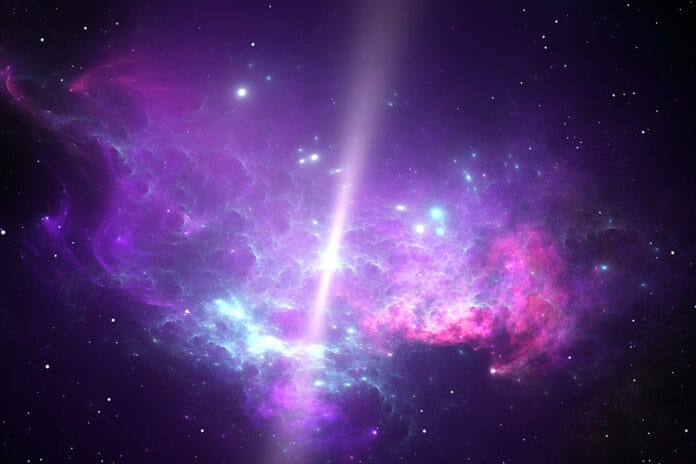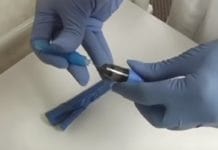I often hear patients and, in some instances, dental professionals stating they are trying to avoid using fluoride because it is a “neurotoxin.” When I hear these things, I always think to myself, “Good luck, fluoride is everywhere!”
It turns out my thoughts may be further confirmed by a recent discovery of fluorine in a galaxy 12 billion light-years away.6 Fluorine was first discovered in 1813, and it was later isolated by Henri Moissan in 1886. Moissan won the Noble Prize in 1906 for isolating fluorine.1
However, it wasn’t until 1901 when fluoride research began to be connected to dental health. The event that started the research was when a young dentist, Dr. Fredrick McKay, moved to Colorado Springs, Colorado, to open a dental practice. He noticed brown stains on the teeth of many of his patients. Dr. McKay later convinced Dr. G.V. Black to come out to Colorado to collaborate and work to determine the etiology of the stains he was seeing in his patients, which we now know was high levels of fluoride in the water, resulting in fluorosis.2
Widespread Presence of Fluoride
Fluoride is naturally occurring on the earth and is released from rocks into the soil, water, and air. Groundwater and natural springs can have high levels of fluoride. However, the fluoride level in most water is very low, and all water contains some level of fluoride.
Fluorine is the element that produces the ion found in fluoride; fluorine is the most reactive of all the elements; therefore, it is not found naturally in its elemental state.3
Fluorite, also known as fluorspar, is the mineral form of calcium fluoride. Fluorite produces a blue glow that was called “fluorescence” in 1852 by George Gabriel Stokes.
We use different compounds of fluorine for multiple things. Dental professionals primarily think of it for strengthening teeth in the form of sodium fluoride. However, fluorine compounds are used to produce different items such as the nonstick coatings found on pots and pans, coolants for refrigerators and air conditioners, a metal cleaner, and for polishing, frosting, and etching of glass.7
The Interstellar Picture of Fluorine
The bigger picture regarding fluorine and where it may have originated is that it likely was one of the elements creating the planet that we call home. Fluorine is the 13th most abundant element in the earth’s crust. So, how might it have gotten there?
When stars die, the elements they produce get dispersed within a galaxy. These elements can form new planets. It is well documented that fluorine is produced in star explosions, also known as supernovas. This is the first-time fluorine has been documented outside of the Milky Way or its neighboring galaxies at such high levels.5 Fluorine levels increase as the star reaches the end of its life.
Did astronomers stumble across the end of a star’s life that may one day contribute to the development of a new planet? It will likely take millions to billions of years to get that answer. However, if that is the case and the fluorine that disperses after the star dies contributes to a new planet, dental professionals can rest easy knowing the inhabitants will have a resource to keep their teeth healthy.
The next time you apply fluoride varnish, consider that you are using stardust to strengthen teeth. The entire concept that resources from a star can benefit oral health is fascinating. I’ll leave you with a quote by Nils Ryde in EarthSky, “So, the fluorine in our toothpaste originates from the sun’s dead ancestors.”8
Need CE? Check Out the Self-Study, Peer-Reviewed CE Courses from Today’s RDH!
Listen to the Today’s RDH Dental Hygiene Podcast Below:
References
- Tutton, A. Isolation of Fluorine. 1887; 37, 179–182. https://doi.org/10.1038/037179b0. Retrieved from https://www.nature.com/articles/037179b0#citeas
- The Story of Fluoridation. (2018, July). National Institute of Dental and Craniofacial Research. Retrieved from https://www.nidcr.nih.gov/health-info/fluoride/the-story-of-fluoridation
- Kapp, R. Fluorine. Encyclopedia of Toxicology, Second Edition. 2005. P. 343-346. Retrieved from https://www.sciencedirect.com/science/article/pii/B0123694000004208
- Ceredig, R. George Gabriel Stokes as a Biologist. Philos Trans A Math Phys Eng Sci. 2020 Sep 4; 378(2179): 20200105. doi: 10.1098/rsta.2020.0105. Epub 2020 Aug 3. PMID: 32762439. Retrieved from https://pubmed.ncbi.nlm.nih.gov/32762439/
- Astronomers Make Most Distant Detection Yet of Fluorine in Star-forming Galaxy. (2021, November 4). ScienceDaily. Retrieved from sciencedaily.com/releases/2021/11/211104121307.htm
- Franco, M., Coppin, K.E.K., Geach, J.E., et al. The Ramp-up of Interstellar Medium Enrichment at z > 4. Nature Astronomy.DOI: 10.1038/s41550-021-01515-9. Retrieved from www.nature.com/articles/s41550-021-01515-9
- Christe, K., Schneider, S. Fluorine. Encyclopedia Britannica. (2021, June 20). Retrieved from https://www.britannica.com/science/fluorine
- Your Toothpaste’s Fluorine was Formed in a Star. (2014, August 22). Retrieved from https://earthsky.org/space/your-toothpastes-fluorine-was-formed-in-a-star/











